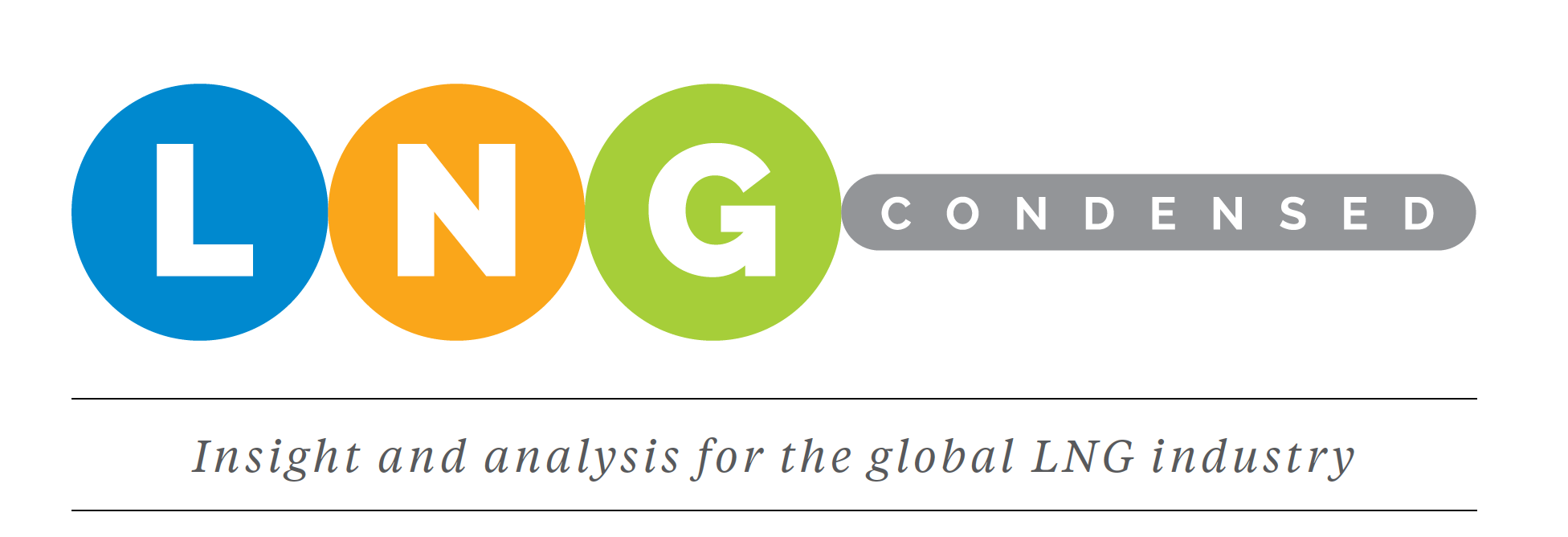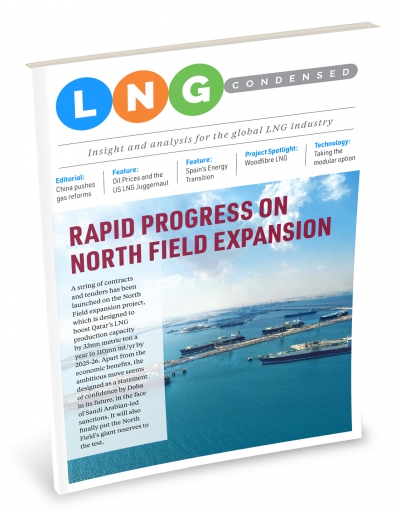Editorial: Recession Impact [LNG Condensed]
The LNG industry looks set for a prolonged period of price weakness hit by a double whammy of a supply surplus within the LNG market itself and a steadily worsening outlook for the global economy, which will impact energy demand more broadly.
While forward spreads show a widening differential between Asian spot LNG and European hub prices going into the winter, low prices over the summer mean storage levels are high. In Europe, many countries’ storage facilities are above 90% full well before the end of the injection season.
|
Advertisement: The National Gas Company of Trinidad and Tobago Limited (NGC) NGC’s HSSE strategy is reflective and supportive of the organisational vision to become a leader in the global energy business. |
Yet supply continues to build with the US Energy Information Administration reporting a monthly record for the provision of feed gas to US LNG plants in July of 6.0bn ft3/d, 7% of total US dry natural gas production. This is roughly 40mn mt/yr of LNG on an annualised basis. Export volumes over the next 12 months should in fact be higher as more new capacity is brought online.
The ramp up in volumes came in the first half from Cameron Train 1 in May and Corpus Christi LNG Train 2 in June. Freeport LNG and Elba Island LNG are expected to start commercial operations in coming months. The US will have six major LNG facilities in operation, consolidating its recently-acquired position as the third largest LNG producer in the world.
ABSORPTION CONSTRAINTS
The problem of where to put all this LNG may become acute because the ability to absorb it is limited by contractual and infrastructural constraints. A huge amount of US LNG has fl owed into Europe’s typically under-utilised LNG terminals, but that doesn’t mean they can continue to import at the same level.
European utilities have take-or-pay contracts for pipeline gas which reduces the amount of spot LNG they might take on price grounds alone, while gas-in-storage hitting the tank top is another fi nite constraint.
The ability to absorb more LNG relies on demand. Cheap gas plus the recent rise in carbon prices under the EU Emissions Trading System has certainly given a boost to gas-fi red generation in Europe.
However, this alone is unlikely to be enough to absorb the surplus unless Mother Nature comes to the industry’s aid in the form of higher temperatures for the remainder of the northern hemisphere summer, boosting air cooling demand and thus power generation, and then an early and cold start to the northern hemisphere winter pushing up heating demand.
ECONOMIC HEADWINDS STIFFEN
The LNG market will certainly need some extra-terrestrial help because the outlook for the world economy, and thus energy demand more broadly, does not look good.
Natural gas demand has grown in recent years faster than that for either coal or oil, rising by 5.3% in 2018, compared with oil’s 1.5% and coal’s 1.4%, but if the world economy moves into recession then the demand boost from low gas prices will be ever more dependent on taking market share from other energy commodities.
The signs of worsening economic headwinds continue to grow, whether one looks at the inversion of US Treasury yields, downward revisions to OECD GDP forecasts, weak growth in container ship volumes or plummeting Chinese and Indian auto sales.
Running alongside is the Chinese-US trade war which has resulted in the imposition of tit-for-tat tariffs on hundreds of billions of dollars’ worth of goods. Then there is Brexit. Even if a no-deal exit for the UK is avoided, uncertainty over the final terms of the UK and the EU’s future trading relationship have yet to be determined.
Business confidence in Germany, Europe’s largest economy and the fourth largest in the world, in August sank to its lowest level in nearly seven years. The German economy shrank by 0.1% between April and June and the country’s central bank has warned it may enter a technical recession – two consecutive quarters of contraction – in the third quarter. It can ill afford serious fallout from Brexit.
The next wave of LNG projects is heavily dependent on continued robust growth in global gas demand. In the short term, in the event that the weather fails to ride to the rescue and the global economy stalls, gas demand will be ever more dependent on energy policies – such as carbon trading – that provide it with an economic advantage over its fossil fuel rivals.

NOW AVAILABLE:

Volume 1, Issue 8 - August 2019
In this Issue:
Qatar: Rapid progress on North Field expansion
China pushes gas reforms
Oil Prices and the US LNG Juggernaut
Country Focus: Spain’s Energy Transition
Project Spotlight: Woodfibre LNG
Technology: Taking the modular option
and more!
LNG Condensed brings you independent analysis of the LNG world's rapidly evolving markets.
Covering the length of the LNG value chain and the breadth of this global industry, it will inform, provoke and enrich your decision making. Published monthly, LNG Condensed provides original content on industry developments by the leading editorial team from Natural Gas World.
LNG Condensed is your magazine for the fuel of the future.
Sign up to NGW Basic FREE or to NGW Premium now to receive LNG Condensed monthly (you will find every issue of LNG Condensed in your subscriber dashboard)




